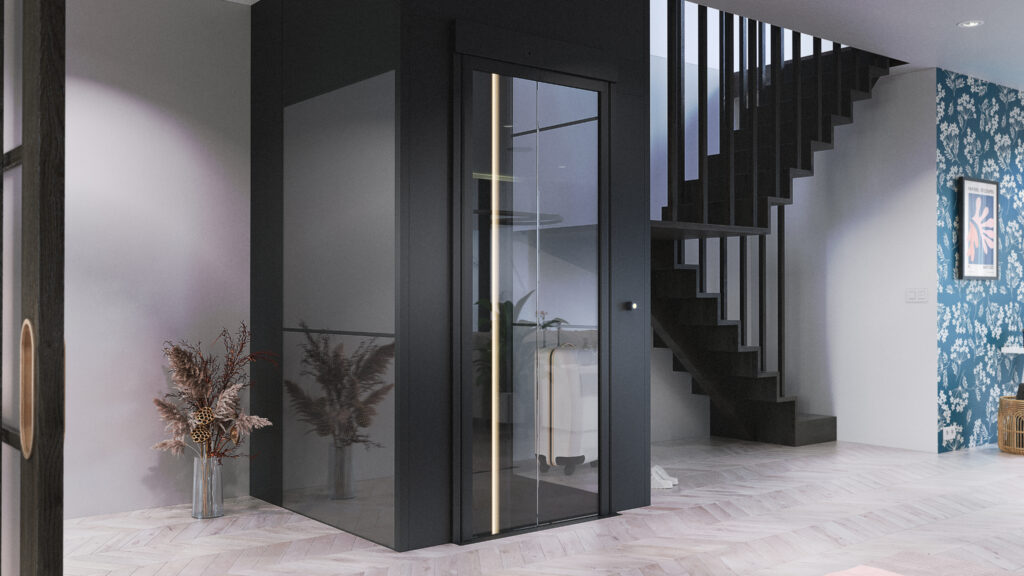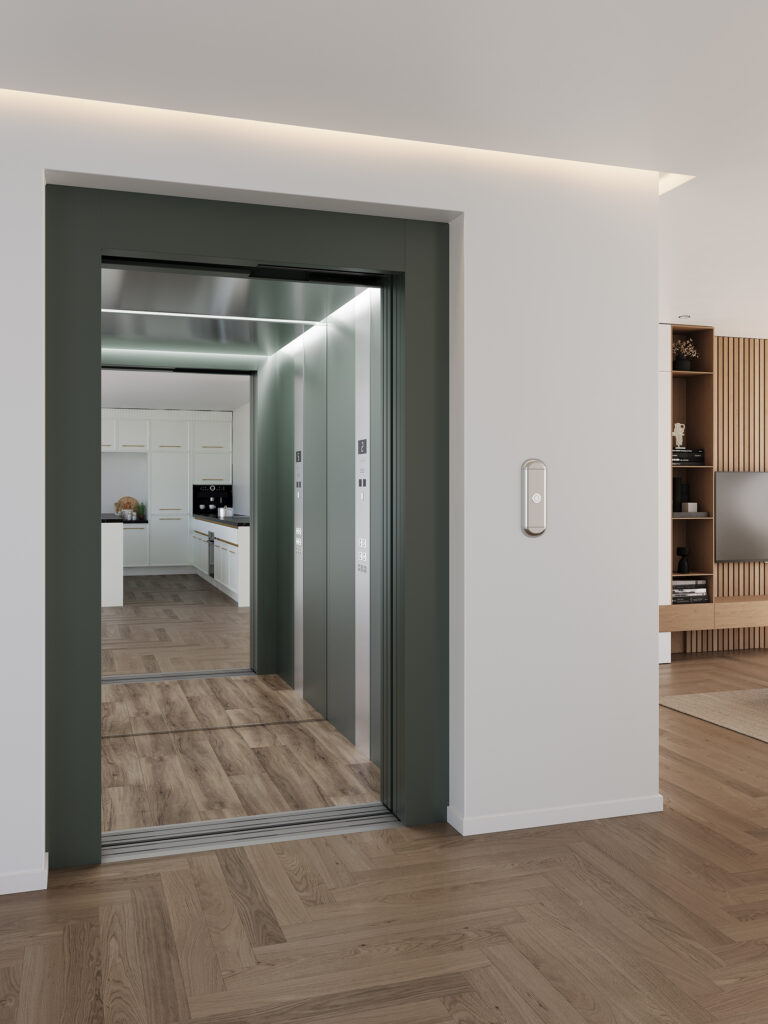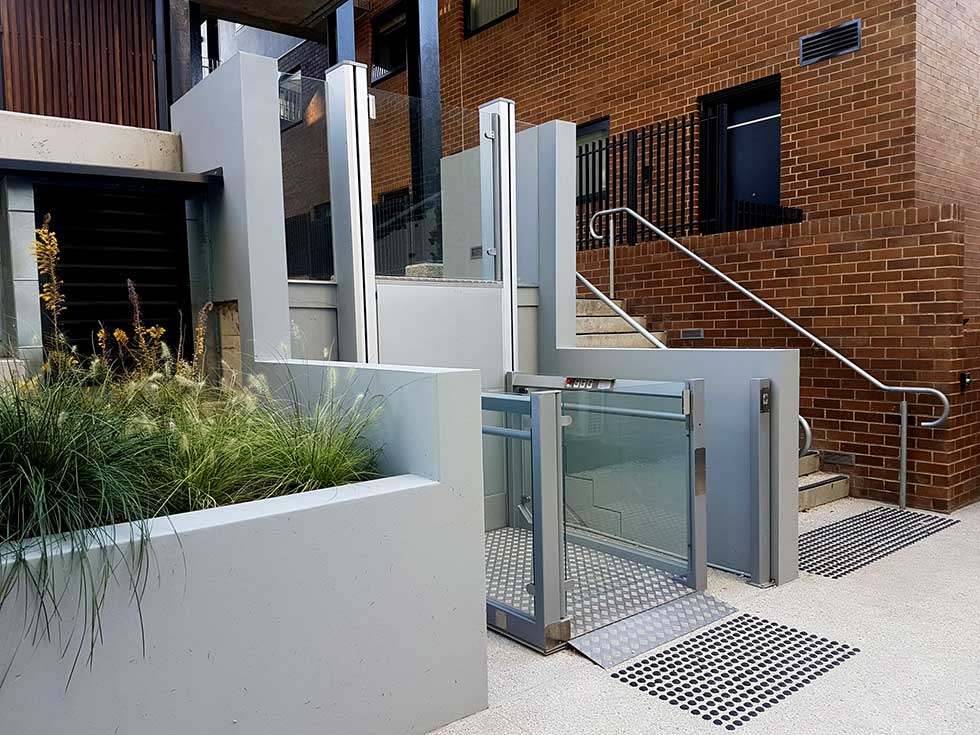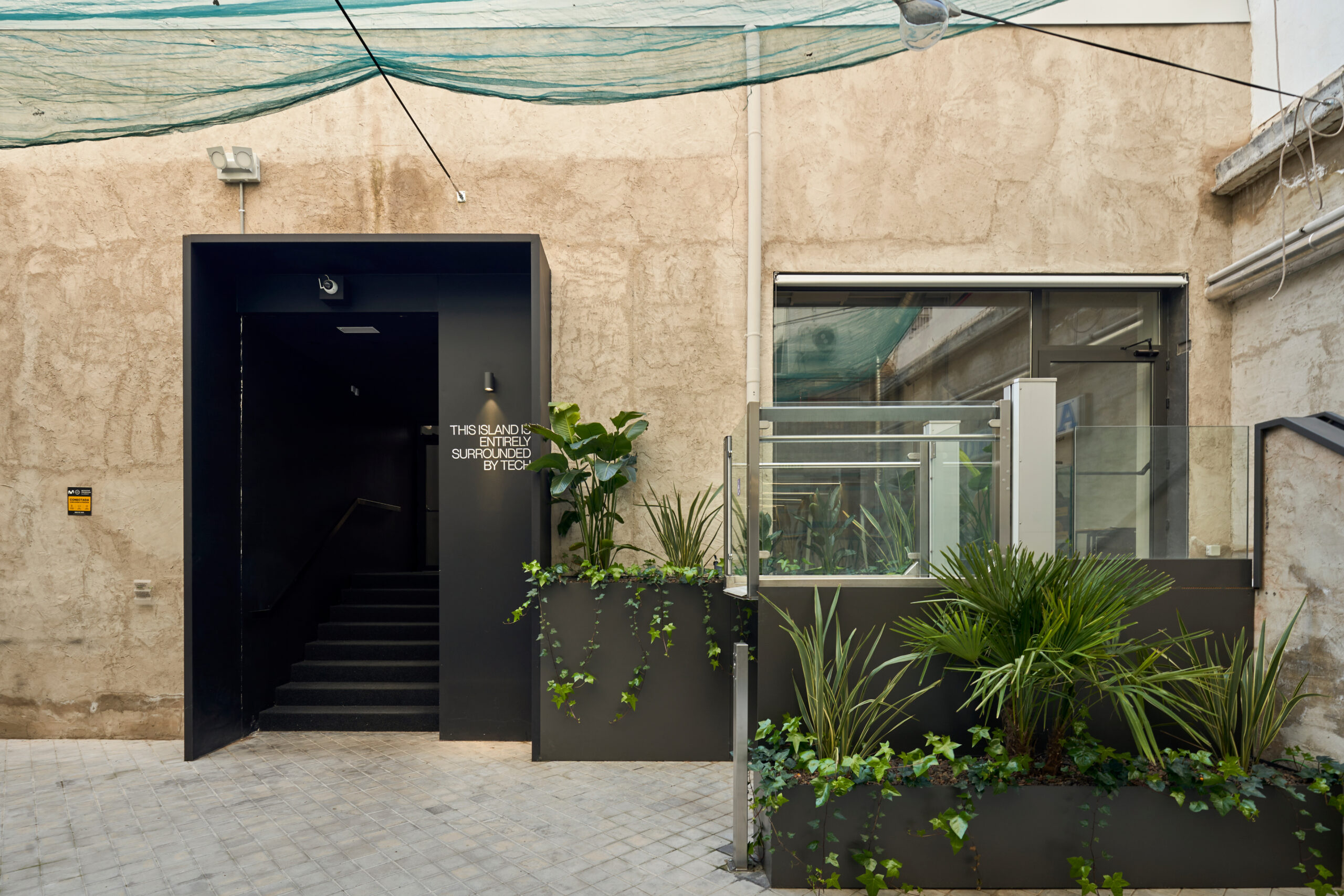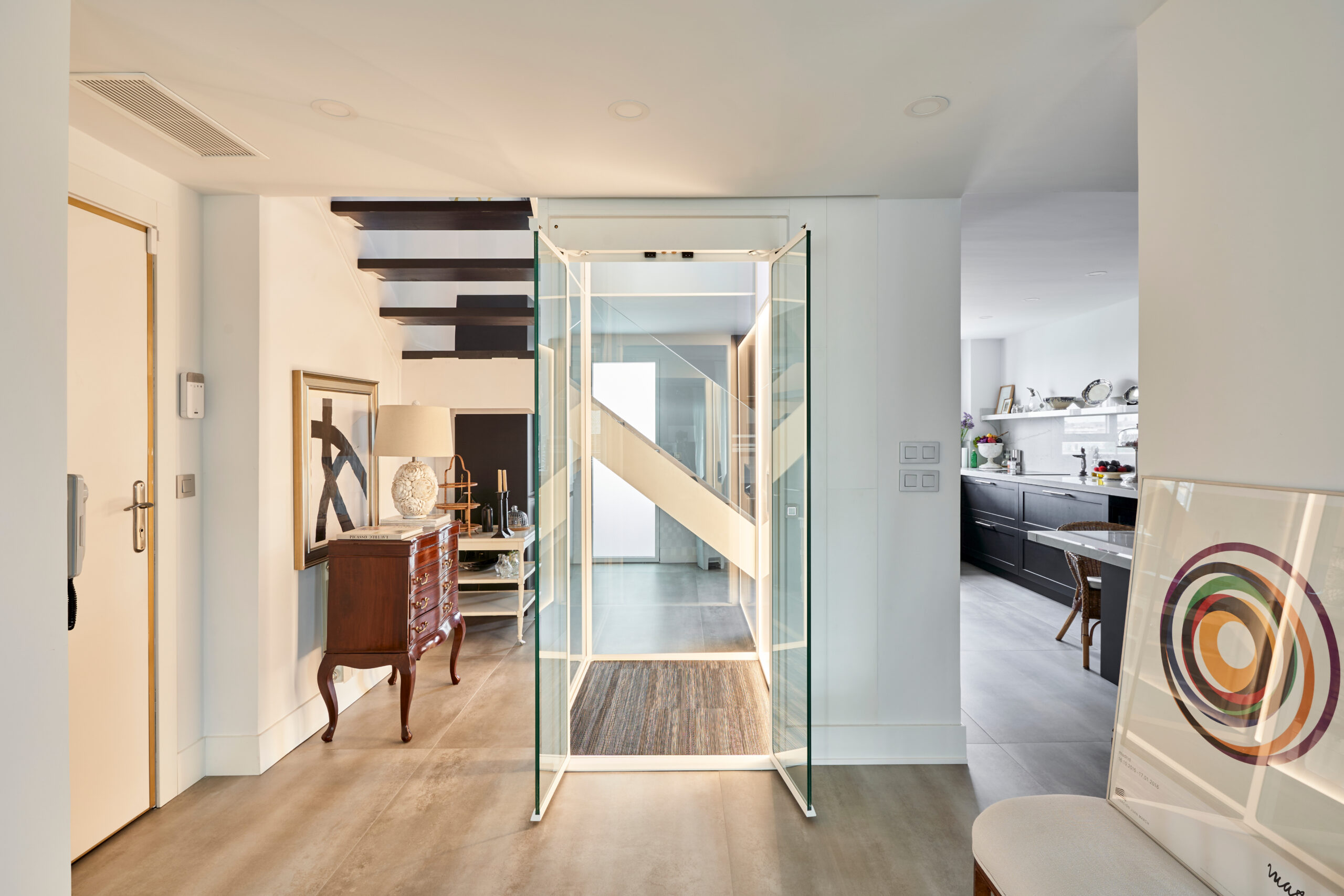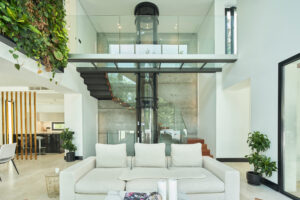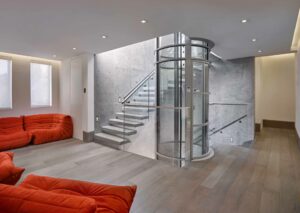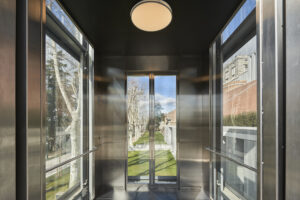Elevators for homeowners' associations
Discover the different types of elevators for residential communities that we offer at Wolair, as well as their advantages, technical considerations for installation and the different design and customization options available. As you will see, our products stand out for their adaptation to new and existing buildings, for offering energy-efficient solutions and for their accessibility. Contact us to learn more about the installation process, approval and financing, costs and maintenance, legal and technical requirements and other relevant information such as regional regulations or grants and subsidies available to promote accessibility in your building.
Elevators for your community of neighbors and adapted solutions
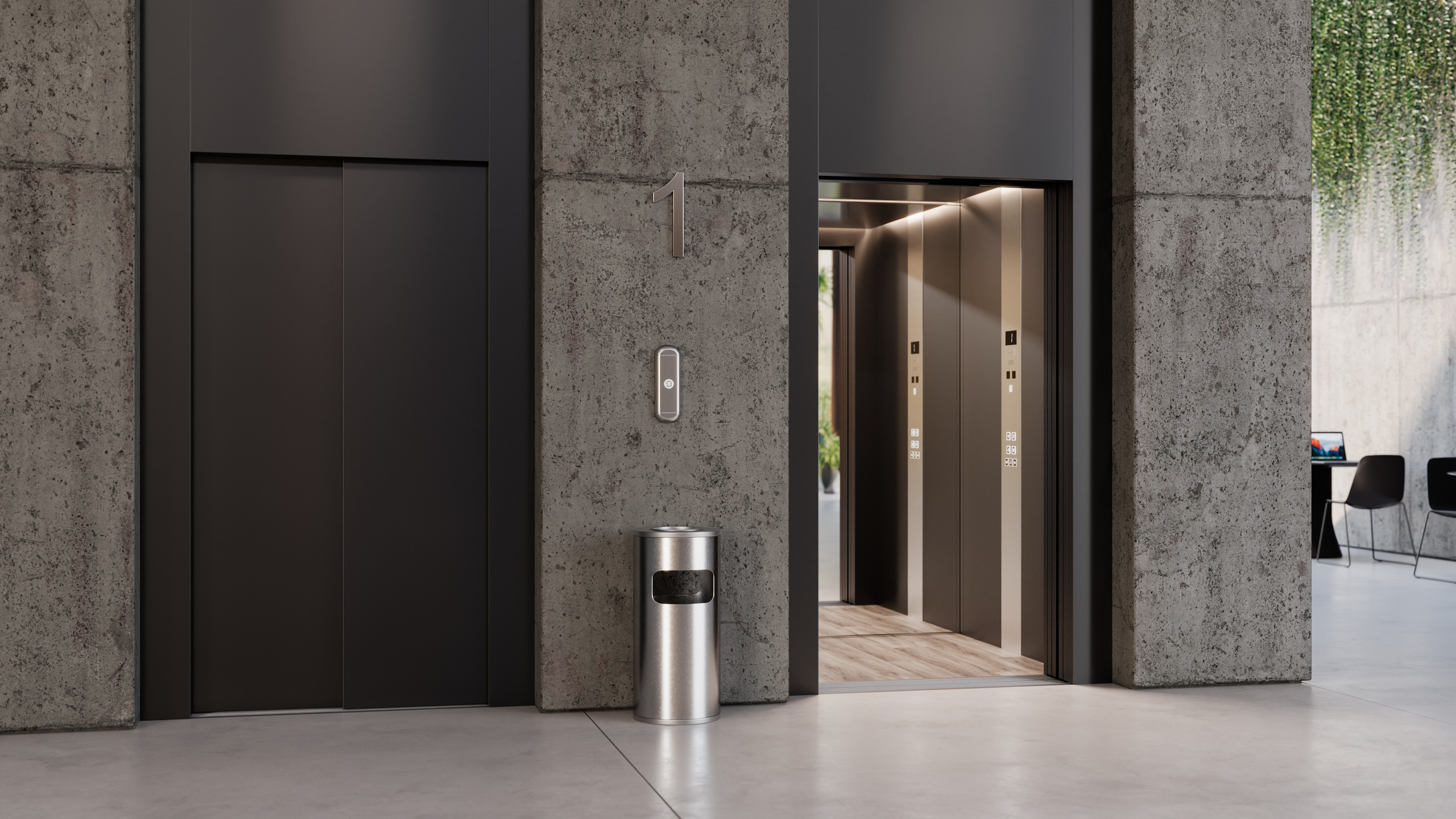
Adaptable to small spaces
Elevators for communities that are distinguished by their ability to adapt to small spaces, offering effective mobility solutions in communities where space is limited, without compromising functionality or comfort.
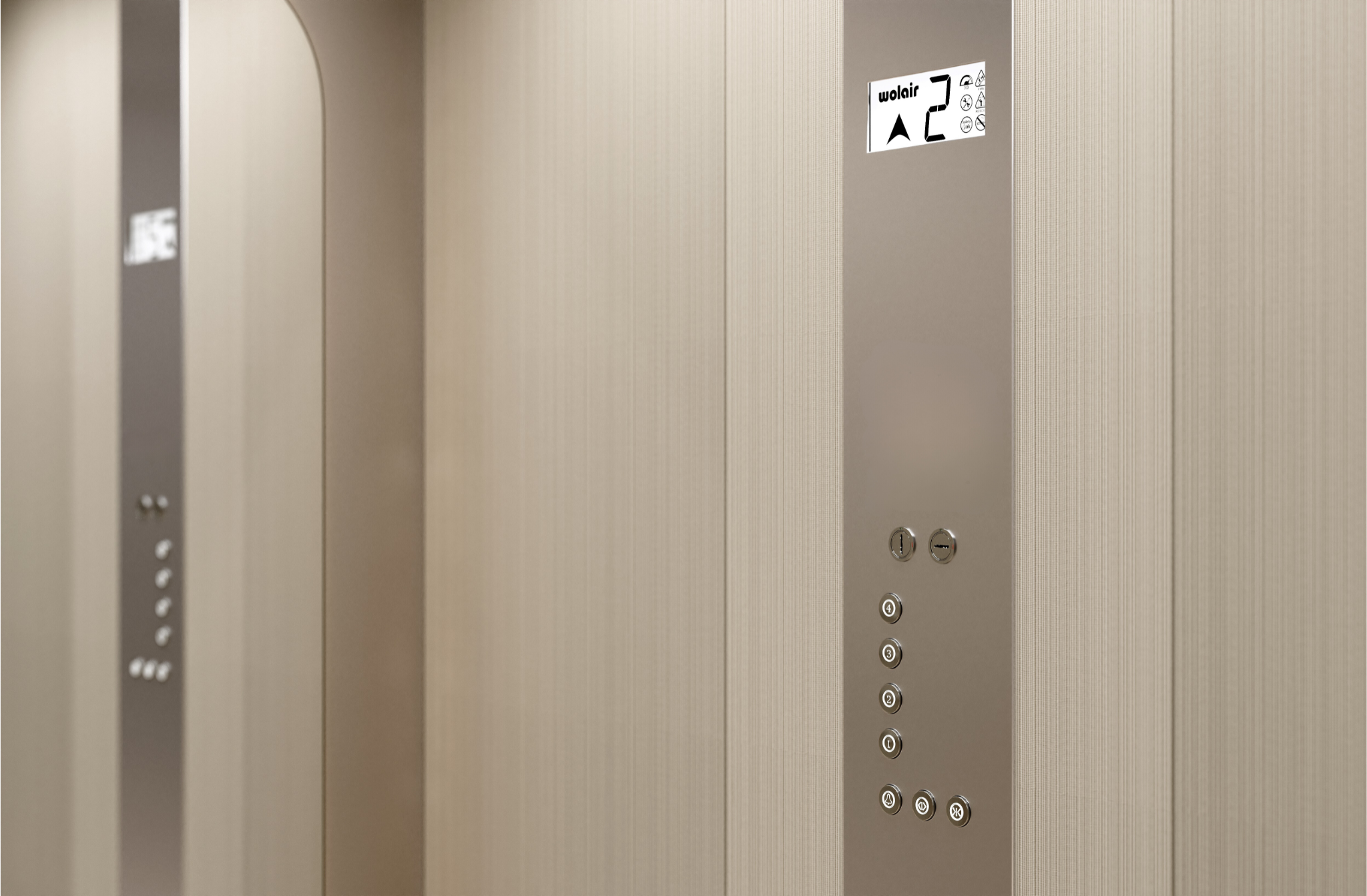
Revaluation of housing
Increase the value of your home by installing an elevator, which attracts potential buyers while improving resident satisfaction.
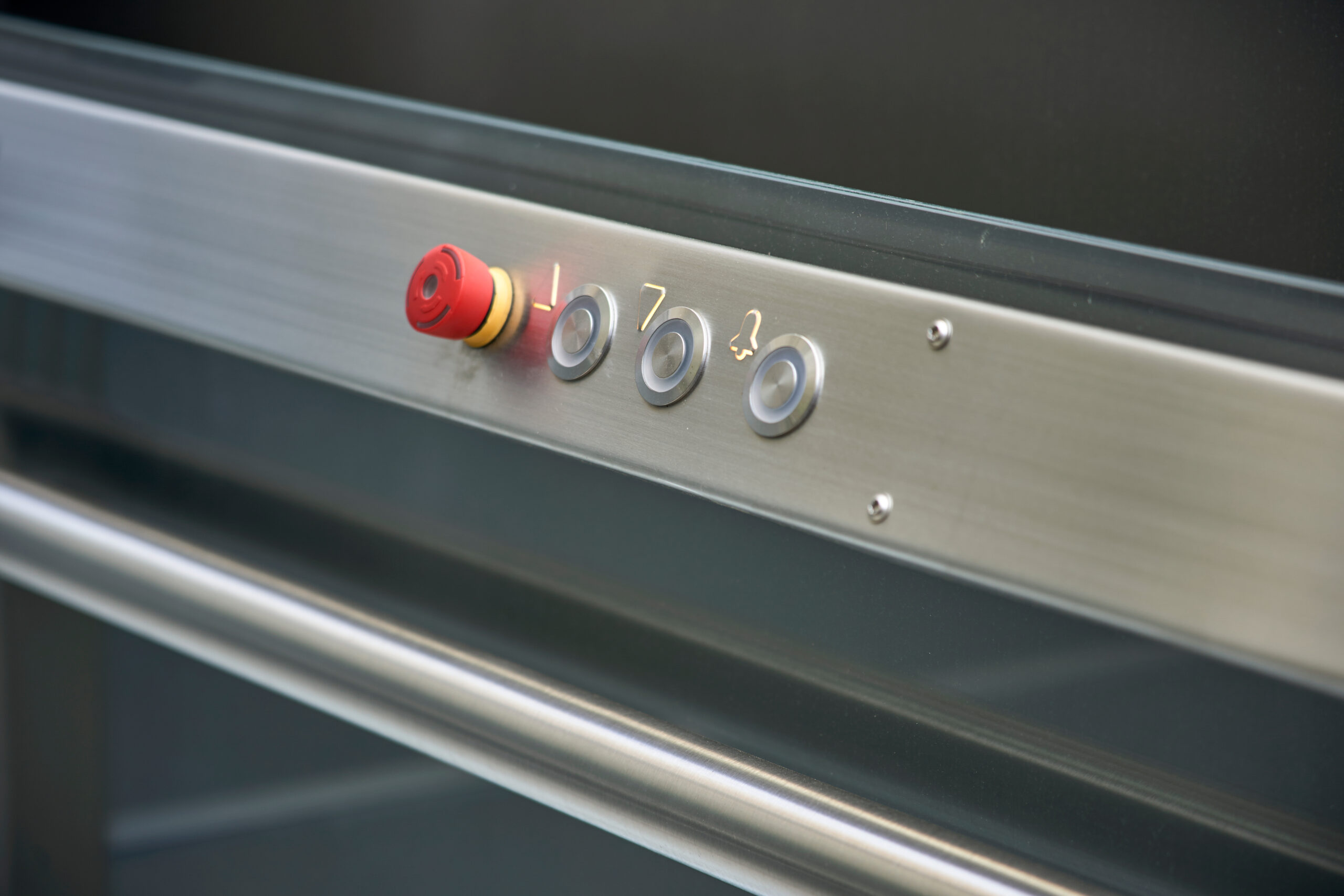
Accessible
An elevator in your community of owners guarantees universal accessibility, providing comfort and facilitating mobility for all residents and visitors, including the installation of small elevators or pitless elevators for communities.
What to consider?
Install an elevator in your community
Among the legal and technical requirements, the Horizontal Property Law, which requires the installation of an elevator when the building is inhabited by people over 70 years of age or people with disabilities, takes precedence. The installation must be approved by the owners’ meeting, generally with a simple or qualified majority.
The Technical Building Code (CTE), on the other hand, represents the regulatory framework that defines the technical and safety conditions for the installation of elevators and prioritizes accessibility solutions such as ramps, elevators and stair lifts.
In this regard, space and architectural compatibility are of particular importance. In other words, the building must meet requirements such as a minimum space of 1.5 square meters and a clear height of at least 2.5 meters for the installation of the elevator. In addition, the elevator design must be compatible with the architecture of the building, maintaining the original aesthetics and structure.
In Spain, the obligation to install an elevator in a building depends on several national and regional rules and regulations. The main regulations governing the installation of elevators, as we have already seen, are the Technical Building Code (CTE) and the Horizontal Property Law. Here are the main cases in which it is mandatory to install an elevator:
Technical Building Code (CTE)
- Newly constructed buildings: According to the Basic Document on Safety of Use and Accessibility (DB-SUA) of the CTE, it is mandatory to install elevators in newly constructed buildings with more than two floors above ground level.
- Accessibility: The CTE also establishes accessibility requirements that may involve the installation of elevators in buildings to ensure that they are accessible to people with disabilities or reduced mobility.
Horizontal Property Law
- Agreement of the community of owners: If the majority of the owners (representing the majority of the participation quotas) decide to install an elevator, this decision is binding for all owners. In this case, all owners must contribute to the cost of the installation, even those who initially voted against it.
- Request of neighbors with disabilities: The installation of an elevator may be mandatory if requested by an owner with a disability or a person over 70 years of age living in the building, provided that the cost does not exceed twelve ordinary monthly community expenses. In this case, the community is obliged to carry out the necessary works to guarantee accessibility.
Regional and local regulations
Some autonomous communities and municipalities may have additional regulations requiring the installation of elevators in certain cases, especially in older buildings or in urban rehabilitation programs.
By installing an elevator in a community of owners, architectural barriers for neighbors and visitors are eliminated and the comfort of all users is increased. Moving between floors becomes a much more pleasant and faster experience, improves the daily experience of residents, especially those with physical limitations.
Wolair elevators integrate perfectly with the building’s interior design, offering a wide range of finishes and customization options, along with seamless integration with the architecture. Our solutions not only meet functional needs but also enhance the overall aesthetics of the building, ensuring their installation in buildings with structural limitations.
At Wolair, our elevators are equipped with the latest in terms of technology and advanced security systems that include alarm systems, anti-crushing, bidirectional communication and remote monitoring, ensuring the safety of users thanks to access control systems that allow managing the use of the elevator, increasing security in the building and optimizing its operation.
Wolair uses energy efficient and low energy systems in its elevators, reducing its customers’ carbon footprint and electricity consumption.
Wolair stands out for its traction for having the most innovative and technological lifting solutions in the market.
There are various state, regional and local grants and subsidies for the installation of elevators in buildings that do not have this infrastructure, especially if the aim is to improve accessibility. The most representative aid in recent years has been the Housing Rehabilitation and Urban Regeneration plan of the Next Generation EU funds for the rehabilitation, accessibility and energy efficiency of housing.
